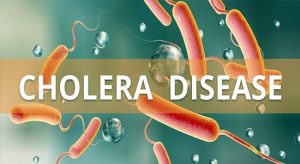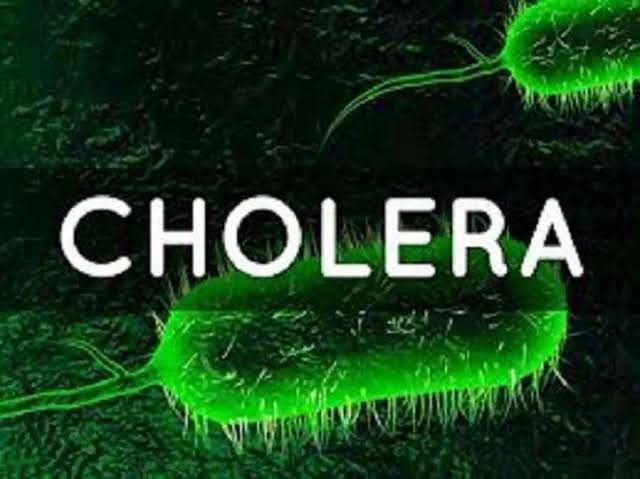Meet Amira, a 35-year-old mother of three from a small village in Mozambique. Amira’s life was turned upside down when her youngest child, 2-year-old Maria, fell ill with severe diarrhea and vomiting. Despite Amira’s best efforts to care for her daughter, Maria’s condition rapidly deteriorated.
Desperate for help, Amira rushed Maria to the local health clinic, where she was diagnosed with cholera. The clinic was overcrowded and understaffed, but the healthcare workers sprang into action, administering intravenous fluids and antibiotics to Maria.
As Maria lay in the clinic, Amira watched in horror as her daughter’s tiny body struggled to fight the deadly disease. But the medical team refused to give up. They worked tirelessly to stabilize Maria’s condition, monitoring her vital signs and adjusting her treatment as needed.
After days of intense treatment, Maria finally began to show signs of improvement. Her diarrhea subsided, her fever broke, and she began to smile again. Amira was overjoyed, knowing that her daughter’s life had been saved thanks to the quick and effective medical treatment.
But Amira’s relief was short-lived. Soon, she too began to show symptoms of cholera. She was rushed to the clinic, where the same medical team that had saved Maria sprang into action once again.
Thanks to their tireless efforts, Amira received the same life-saving treatment as her daughter. She spent several days in the clinic, recovering from the brink of death.
Today, Amira and Maria are thriving. They returned home to their village, where they are now advocates for improved sanitation and hygiene practices. Amira’s story is a testament to the power of medical treatment in combating cholera, and a reminder that even in the darkest moments, there is always hope for a better tomorrow.
What is Cholera?

Cholera is a highly infectious and potentially deadly bacterial disease caused by Vibrio cholerae.
Causes
Primary causes:
1. Infection with Vibrio cholerae bacteria, typically through:
– Contaminated food (especially raw or undercooked seafood)
– Contaminated water (drinking, swimming, or bathing)
– Direct contact with an infected person’s feces or vomit
Contributing factors:
1. Poor sanitation and hygiene:
– Inadequate waste management
– Lack of clean water sources
– Inadequate handwashing facilities
2. Environmental factors:
– Flooding or natural disasters
– Climate change
– Poor infrastructure (e.g., inadequate sewage systems)
3. Human factors:
– Poverty and overcrowding
– Lack of education and awareness
– Inadequate healthcare infrastructure
– Malnutrition and weakened immune systems
4. Other factors:
– Conflict and displacement
– Migration and travel
– Food handling and preparation practices
The Signs and Symptoms of Cholera typically appear within 1-5 days after infection and may include:
Mild to Moderate Symptoms:
1. Diarrhea (often described as “rice-water stool”)
2. Vomiting
3. Thirst
4. Dry mouth
5. Decreased urine output
6. Sunken eyes
7. Low blood pressure
8. Rapid heartbeat
9. Muscle cramps
10. Weakness
Severe Symptoms:
1. Profuse, watery diarrhea (up to 1 liter per hour)
2. Vomiting blood or coffee ground-like material
3. Severe dehydration (shock, organ failure)
4. Electrolyte imbalance (leading to seizures, heart arrhythmias)
5. Hypovolemic shock (low blood volume, organ failure)
6. Confusion, altered mental state
7. Loss of skin elasticity
8. Decreased or absent urine output
Note: Some people may not show symptoms at all, or they may be mild and self-limiting. However, in severe cases, Cholera can be life-threatening if not treated promptly and properly.
Complications
1. Dehydration and Electrolyte Imbalance: Severe fluid loss can cause dehydration, electrolyte imbalance, and acid-base disturbances.
2. Shock and Organ Failure: Hypovolemic shock can lead to organ failure, including kidney, liver, and respiratory failure.
3. Kidney Failure: Acute kidney injury or chronic kidney disease can occur due to dehydration and toxin damage.
4. Respiratory Failure: Severe dehydration can lead to respiratory failure, requiring mechanical ventilation.
5. Cardiac Arrest: Electrolyte imbalance and dehydration can cause cardiac arrhythmias and arrest.
6. Septicemia: Bacteremia can occur, leading to septicemia, meningitis, or other infections.
7. Malnutrition: Prolonged diarrhea and vomiting can lead to malnutrition, weight loss, and muscle wasting.
8. Irritable Bowel Syndrome (IBS): Some people may develop IBS after a Cholera infection.
9. Reacting Vaccination: In rare cases, the Cholera vaccine can cause an allergic reaction or other side effects.
10. Long-term Health Effects: Repeated Cholera infections may increase the risk of developing long-term health issues, such as kidney disease or irritable bowel syndrome.
11. Pregnancy Complications: Cholera can increase the risk of miscarriage, preterm labor, and low birth weight.
12. Mental Health: Survivors of Cholera outbreaks may experience anxiety, depression, or post-traumatic stress disorder (PTSD).
Prompt medical treatment can help prevent or manage these complications.
Prevention
1. Access to Clean Water: Ensure availability of safe drinking water, proper waste management, and sanitation facilities.
2. Proper Hygiene: Promote handwashing with soap, especially after using the bathroom and before handling food.
3. Food Safety: Avoid eating undercooked or raw seafood, and ensure food is stored, handled, and cooked safely.
4. Vaccination: Get vaccinated against Cholera, especially if traveling to high-risk areas or working in healthcare.
5. Improved Sanitation: Ensure proper disposal of human waste, and maintain clean environments.
6. Community Education: Raise awareness about Cholera prevention, symptoms, and treatment.
7. Healthcare Infrastructure: Strengthen healthcare systems, including diagnostic facilities and treatment centers.
8. Surveillance and Monitoring: Track Cholera outbreaks, and respond quickly to contain them.
9. Water, Sanitation, and Hygiene (WASH) Programs: Implement WASH programs in high-risk areas.
10. Personal Protective Equipment (PPE): Use PPE, such as gloves and masks, when handling patients or contaminated materials.
11. Avoid Close Contact: Minimize close contact with individuals suffering from Cholera.
12. Cleanliness: Maintain cleanliness in living spaces, food preparation areas, and health care facilities
Treatment and management of Cholera involve a combination of:
1. Fluid Replacement: Oral Rehydration Therapy (ORT) or Intravenous (IV) fluids to replace lost fluids and electrolytes.
2. Antibiotics: Doxycycline or Azithromycin to shorten the duration and severity of the illness.
3. Rest: Adequate rest to help the body recover.
4. Hydration: Continued hydration to prevent dehydration.
5. Electrolyte Replacement: Replacement of lost electrolytes, such as potassium and sodium.
6. Monitoring: Close monitoring of vital signs, fluid status, and electrolyte levels.
7. Supportive Care: Management of symptoms, such as vomiting and diarrhea.
8. Isolation: Isolation of the patient to prevent transmission.
9. Wound Care: Proper wound care to prevent infection.
10. Nutrition: Adequate nutrition to support recovery.
In severe cases, hospitalization may be necessary to manage:
1. Severe dehydration
2. Shock
3. Organ failure
4. Respiratory distress
It’s essential to seek medical attention immediately if symptoms persist or worsen over time.
Note: Antibiotics are not always necessary, and their use depends on the severity of the case and the presence of other health conditions.

